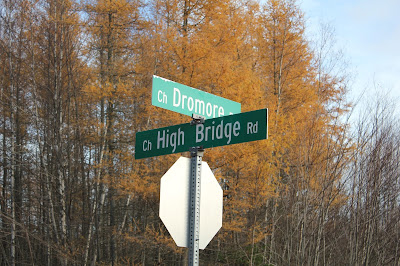Every fall, many roadside curbs have 30 or more bags of leaves in front of every house. That adds up to thousands and thousands of bags going to landfills.
We homeowners rake up piles and piles and piles of leaves, and stuff them into bags, which are eventually trucked away to who knows where. That is actually quite a waste. The trees need to constantly find new sources of nutrients to thrive well. When leaves are left to decompose, their nutrients go back into the soil, to be reused by the trees that shed them.
 Of course, the problem is that too many leaves will smother and kill the grass underneath. So what is the solution?
Of course, the problem is that too many leaves will smother and kill the grass underneath. So what is the solution? Some of the leaves can be bagged and saved to add to the compost bin. They provide the brown carbon that needs to be layered with the green nitrogen of kitchen waste to create good compost. But that only gets rid of a few bags. What about the rest?
Leaves don't decompose very quickly. But shredded leaves have much more surface area susceptible to decomposition. This year, I plan to chop my leaves with the lawn mower, and leave them where they fall. I'm hoping this will result in tiny pieces that earthworms will be able to pull into the ground and turn into new soil.
And the rest of the leaf shreds will blow into someone else's yard!
















































